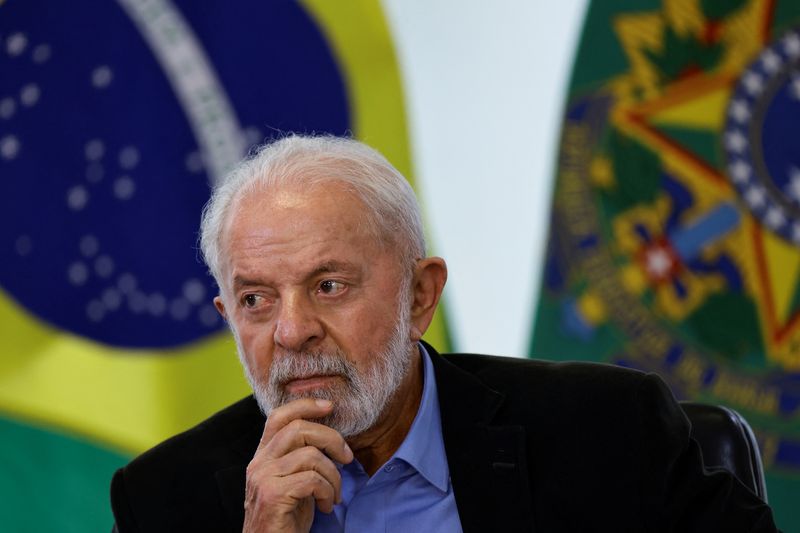Brazil to adopt continuous 3% inflation target, says Lula
2024.06.26 09:53
SAO PAULO (Reuters) – Brazilian President Luiz Inacio Lula da Silva said on Wednesday that his government has decided to adopt a continuous target for inflation.
“We maintained the existing target. The novelty was establishing the continuous target,” he told news outlet UOL in an interview.
The change in the timeframe to assess the inflation goal’s fulfillment was announced a year ago, but it hinged on a presidential decree that has not yet been signed by Lula.
Currently, Brazil’s National Monetary Council (CMN), the country’s top economic policy body, sets annual inflation targets that must be met each calendar year.
The official goal was set at 3% from 2024 to 2026, plus or minus 1.5 percentage points. The CMN meets on Wednesday, and under the current legislation, it must vote on the target for 2027.
Finance Minister Fernando Haddad, who is part of the CMN along with the planning minister and the central bank governor, advocates for pursuing inflation targets within a “continuous” timeframe, arguing that a longer-term approach provides more room to accommodate price shocks without requiring monetary tightening.
Lula said that the central bank director of monetary policy, Gabriel Galipolo, met with him on Tuesday to discuss the inflation target.
When asked if Galipolo would be chosen to head the central bank once Roberto Campos Neto’s term as governor ends in December, he said he is not yet focusing on the matter.
“Galipolo is a highly prepared fellow who knows a lot about the financial system. But I’m not thinking about the central bank issue yet. The time will come when I will consider it and appoint a name,” he said.

Now in his third non-consecutive term, Lula said the central bank’s autonomy has always been respected in his previous administrations, but reiterated criticism of the current benchmark interest rate of 10.5% given the annual inflation rate of 4%.
Brazil’s real extended its drop against the U.S. dollar to 1% amid Lula’s remarks, weakening past 5.50 per greenback in spot trading.








